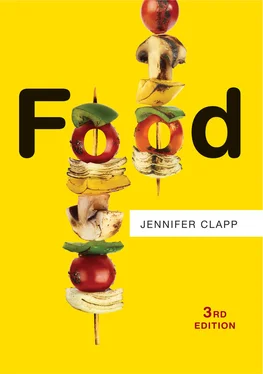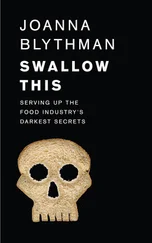The rise of transnational agrifood corporations
State support for international exports of grain and the spread of large-scale agricultural production throughout much of the developing world in the 1970s enabled large transnational corporations in the agrifood sector to expand their international operations. This expansion included not just marketing their products around the world, but also global-scale sourcing and processing operations. Already engaged in extensive international food trade since the 1800s, firms in the global grain industry began to expand their operations into new markets in the 1970s. At the same time, the grain companies also began to accelerate their expansion both horizontally and vertically – acquiring firms specializing in different food commodities, and expanding up and down along the food supply chain into shipping and food processing. With the spread of the agroindustrial production model, the agricultural input industry also began to market hybrid seeds, pesticides, and fertilizers in the developing world beginning in the 1970s and 1980s, and since the 1990s the sector has consolidated and is now dominated by just a handful of firms. From the 1990s and early 2000s, retail grocery firms also began to go global, not just marketing food to consumers, but also engaging increasingly in processing and the direct acquisition of fresh foods from around the world.
In extending their global reach in this way, these corporations have actively shaped the global food system to fit their own needs. Transnational agrifood firms have been able to influence the world food economy in ways that serve their own objectives via a variety of means and through new governance spaces. These range from pricing power – that is, the power to set the prices paid to their suppliers as well as the prices consumers pay in the marketplace – to lobbying and other means of influencing government regulations that affect their business. They also include the establishment of private sector regulations that govern the global food supply chain, and taking an active role in public debates in order to shape public discourse about the role of global firms in the world food economy. Using these strategies, global food sector TNCs have been able to shape the global food system around corporate needs – moving large amounts of agricultural inputs and foodstuffs through relatively few firms – with a large number of farmers on one side, and even more consumers on the other.
The financialization of food and agriculture
The world food economy has become increasingly “financialized” – that is, it is increasingly tied to activities and trends in the financial investment sector, even though that sector is not directly concerned with the food system other than as an arena in which to earn a profit. Agricultural commodity futures markets – markets that sell a set amount of a commodity for delivery at a future date – have historically played an important role in allowing farmers and other food system operators to hedge their risks in an uncertain market due to weather and other factors that can affect prices in between planting and harvest times. Speculators have also played a role in these markets, betting on price movements and providing liquidity – that is, cash flow – for other actors in the markets. The amount of speculation allowed in these markets has historically been subject to strict regulation in order to avoid “excessive speculation” that could cause huge price swings and have undue effects on access to food.
Recent decades, however, have seen the number of speculators on these markets rise dramatically, in effect creating a new middle space in the world food economy where new norms and practices are developed. This increase in financial trading in agricultural commodity futures markets is the product of a relaxation of the regulations in the 1980s and 1990s regarding speculation in futures markets. Banks began to sell new kinds of financial investment products linked directly to movements in commodity markets to a range of large-scale institutional investors, including hedge funds and pension funds. When these actors moved into agricultural commodity futures investments in large numbers in 2007–2008, there was a sudden sharp increase in prices of food commodities. While there is fierce debate over whether speculation on these markets was a leading cause or a consequence of food price rises, there is a growing consensus that such investment has exacerbated food price volatility trends in recent years. In other words, financial investors, through this new middle space in the world food economy, have enormous influence over food price trends, even though they have very little direct interest in the actual commodities they are trading. Further, the financialization of food has also fed into large-scale foreign land acquisitions and biofuel investments, in a new nexus of activity into which financial investors have actively tapped. Financial actors are also trading new kinds of financial investment products based on the share values of some of the largest agrifood TNCs.
Despite their seeming distance from the realities of agricultural production and food consumption, the forces shaping the world food economy and the complex matrix of actors and rule systems have had enormous impact on both agricultural producers and consumers, as well as the natural environment. The world food economy itself is highly fragile. It is prone to crises that threaten farmer and producer livelihoods, people’s access to food, and the environment. Three key features, in particular, stand out as products of this system, and each has generated a disconnect – or growing distance – between the consumption of food and the important relationships associated with its production and trade.
The commodification of food
As the world food economy has expanded over the past century, food has become increasingly commodified. In other words, food has become like any other tradable commodity, valued for the profits it can generate and often discounting its other functions. This trend in many ways has both shaped and is shaped by how the food system developed historically. We have moved increasingly away from food being viewed primarily as a source of nourishment and a cultural feature of society, and toward food as any other product that firms produce, sell, and trade. The people who eat those food products in turn have been reduced to “consumers,” rather than being considered simply as “eaters.” Distance between the production and the eating of food is increased by the commodification of food within the global economy. As noted above, it is not just the physical distance that food travels in global food markets that has grown, but also our lack of awareness of the conditions of its production and the skewed nature of power differentials along agrifood supply chains.
This movement away from food being seen as a special category of goods affects people’s lives, livelihoods, and nutrition in very real ways. Access to food has become largely a market transaction, and if an individual’s place in the economy is threatened, so is their food security. 12For countries that have become dependent on food imports, the commodification of food is of particular importance, with entire countries now highly vulnerable to market changes. As former US President Bill Clinton noted in a speech on World Food Day in 2008, “Food is not a commodity like others . . . it is crazy for us to think we can develop a lot of these countries where I work without increasing their capacity to feed themselves and treating food like it was a color television set.” 13
The commodification of food has not just been in terms of the physical product of food, but also in its abstract form, in the development of financial products based on agricultural and food commodities, as noted above. This financialization of food in effect takes the commodification of food to a new and intangible level, further distancing producers from individual consumers by stretching the scope of the transactions between them. It also increases the distance between the fundamentals of supply and demand with respect to the pricing of food, such that food prices are now determined as much by the overall financial investment climate as they are by the forces that determine the size of the harvest.
Читать дальше












